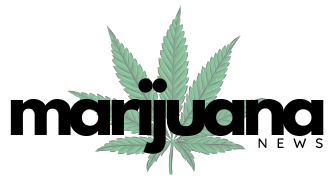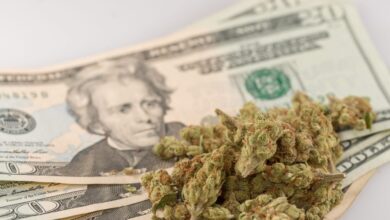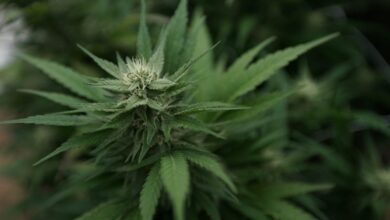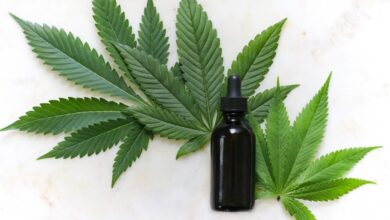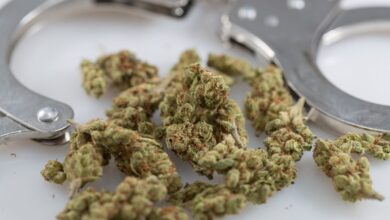World Health Organization Review Could Lead To International Rescheduling Of Coca Leaves
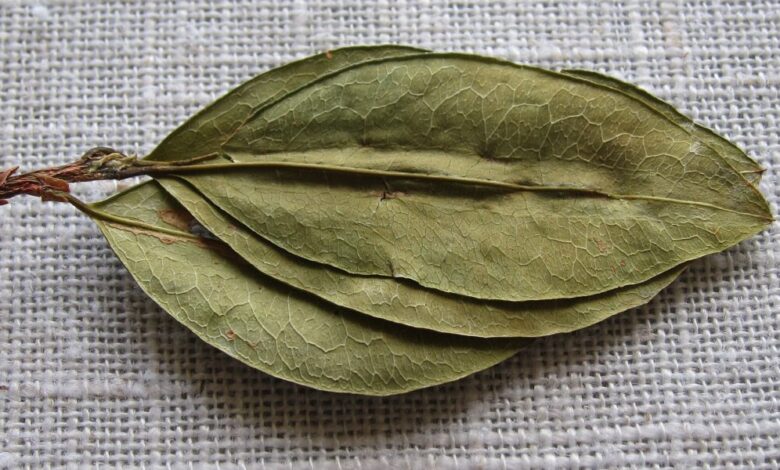
“The views up to now that led to coca’s present classification are indefensible on the premise of at this time’s scientific, moral and authorized requirements.”
By Mattha Busby, Filter
Calls to eradicate coca fields within the Peruvian Andes started a century in the past as a part of a mission civilisatrice led by eugenicist Enrique Paz Soldán, lengthy earlier than concern over cocaine and the next United States-abetted drug conflict. “If we await with folded arms a divine miracle to free our Indigenous inhabitants from the deteriorating motion of coca, we might be renouncing our place as males who love civilization,” he as soon as stated.
For 8,000 years Indigenous communities had chewed coca leaves. However Twentieth-century elites in Lima—just like the Spanish conquistadors after they first arrived on the continent—recognized coca chewing as culturally and spiritually integral to a lifestyle completely different from their very own.
“The consumption of coca, illiteracy, and a unfavourable angle to the superior tradition are intently intertwined,” stated a 1947 report by the Peruvian schooling ministry.
This spurred the United Nations to dispatch a crew of supposed specialists to analyze the “coca-chewing downside” two years later, main the worldwide physique to demand the “suppression” of coca cultivation to eradicate a “social evil.”
A worldwide ban on chewing it was carried out via the UN Single Conference on Narcotic Medication in 1964, leaving coca beneath such a restrictive drug management regime that researchers even at this time usually discover it not possible to supply the understudied leaves.
Comparable paternalistic calls would try to justify the later international drug conflict. However 75 years on from the UN’s first diktats on coca, the group’s well being authority is about to publish its “vital” well being evaluate of the proof underpinning the Schedule I standing of the mildly stimulating, medicinal plant—wealthy in calcium and iron—after requests from Bolivia and Colombia to finish its worldwide prohibition.
Indigenous advocates have been outstanding in constructing momentum for these nations—coca is already authorized in Bolivia; in Colombia, consumption is just permitted inside Indigenous communities—to make that request. “This can be a David and Goliath battle in opposition to colonialism,” David Curtidor, director of indigenous-owned coca beer firm Coca Nasa, told the Instances of London in September. “We’re saying sufficient is sufficient.”
Colombian botanist Óscar Pérez, of Kew Gardens, sees coca because the world’s most misunderstood plant. “It isn’t truthful that the coca plant is so demonized,” he told América Futura in November. “In European nations, particularly within the Schengen space, all coca species are categorised as unlawful, even when it isn’t recognized whether or not they’re used to provide cocaine. In actual fact, I couldn’t take a leaf from right here to do analysis. It’s ridiculous.”
However change could also be on the horizon. The World Well being Group (WHO) evaluate might probably lead the UN Fee on Narcotic Medication to suggest a discount within the classification of coca, from which each cocaine and Coca-Cola derive key elements, beneath drug management treaties—and even decriminalization.
“That is the coca leaf,” Bolivia’s consultant to the UN, Diego Pary, stated in November on the UN in New York, holding one aloft from a pile in entrance of him, identical to former president Evo Morales did within the convention corridor in 2013. However not like Morales, Pary then put the leaf into his mouth.
“We take away the stem, and chew the leaf and we put it to the aspect of our cheek,” he stated, demonstrating.
“We have to demystify the entire narratives which have been developed over time concerning the coca leaf,” Pary added. “The Indigenous communities recognise the coca leaf not simply as a plant however as a way of non secular connection that permits them to be in concord with nature and their ancestors.”
The World Well being Group has three most definitely choices: conclude that the coca leaf ought to stay in Schedule I, suggest switch to the less-restricted Schedule II or suggest the removing of coca from the treaty schedules altogether.
“The views up to now that led to coca’s present classification are indefensible on the premise of at this time’s scientific, moral and authorized requirements,” Martin Jelsma, a program director on the Transnational Institute, a progressive assume tank, informed Filter. “If the WHO fails to name for a change, the company dangers dropping credibility with regard to fulfilling its treaty mandate objectively and exhibiting respect for Indigenous rights.”
Governments defending the established order, he added, worry that altering the standing of the coca leaf might grow to be a precedent for questioning the classification of a number of different medication, marking the start of the top of the worldwide prohibition regime. “There may be a lot at stake and the coca evaluate might be a sizzling matter in UN corridors this complete 12 months.”
Again in 1949, after the UN dispatched its crew to analyze, the mission chief instantly revealed the agenda at an airport press convention. Howard Fonda, who was additionally vp of the American Pharmaceutical Affiliation, claimed that coca chewing was not solely “undoubtedly dangerous and deleterious” however “the reason for racial degeneration of many inhabitants teams.”
“Our research will affirm the reality of our statements, and we hope to have the ability to submit a rational plan of motion…to safe the whole eradication of this pernicious behavior,” he stated.
The next 1950 UN Fee on the Enquiry of the Coca Leaf report really useful the “suppression” of coca use. Psychiatrist and criminologist Pablo Osvaldo Wolff, who labored on the report, later grew to become head of WHO’s Knowledgeable Committee on Dependancy-Producing Medication. He characterised individuals who chew coca as “abulic, apathetic, lazy, insensitive [and] befogged.”
A 1952 WHO paper later stated: “We’re satisfied that coca-leaf chewing is a social evil; the persistent consumption of those leaves constitutes a social poison which undermines the bodily and psychological well being of the inhabitants and lowers its ethical and financial stage.”
Initiatives to regulate coca cultivation had been subsequently tried, however not on any traditionally vital scale. But the groundwork for the systematic and damaging, U.S.-funded coca eradication marketing campaign that might arrive within the Nineteen Eighties had been laid, earlier than the anti-drug marketing campaign vastly exacerbated the civil conflict in Colombia.
Over a number of a long time, greater than 260,000 individuals had been killed with 7 million pressured from their houses. The U.S. pumped a trillion {dollars} into the drug conflict, and loads of it ended up enriching Colombian, Peruvian and Bolivian elites to the detriment of others.
“Most Colombians have by no means seen, not to mention used, cocaine and there they suffered an actual conflict on medication,” anthropologist Wade Davis informed Filter. Davis informed the historical past of coca in his bestselling 1996 ebook One River, partly main him to be made an honorary citizen of Colombia in 2018. “I believe what retains the market going is the cash, not the awful drug.”
Coca, alternatively, is not only of non secular significance to Andean individuals however integral to their eating regimen, which historically lacks a calcium-rich dairy supply, added Davis, who labored on a 1975 dietary examine of the coca leaf at Harvard’s Botanical Museum.
“What we discovered completely horrified our backers on the U.S. authorities,” he informed the current UN assembly. “Seems, coca was chock-full of nutritional vitamins [and] has extra calcium than another plant ever studied by science, which made it good for a eating regimen that historically lacked a dairy product.”
“In contrast with a median of ten cereals, coca was increased in protein, fats, fiber, ash, calcium, phosphorus, iron, vitamin A, riboflavin, and vitamin C,” the 1975 examine discovered.
All of this might be thought-about by WHO, although it’s unlikely to evaluate the potential hurt discount position of coca. Small numbers of individuals experiencing habit to powder or crack cocaine have discovered profit in utilizing coca as a safer different, and lots of extra may very well be ushered towards it via legalization.
On the Taki Wasi retreat heart in Tarapoto, Peru, individuals with substance use issues are handled with coca leaves as a part of a wider rehabilitation routine together with different Amazonian psychoactive vegetation. “Coca supplies steadiness, stimulates dream manufacturing; it’s a toner, it additionally calms bodily and emotional ache, it permits wounds to heal,” wrote founder Dr. Jacques Mabit. “It permits [you] to focus and align on all ranges.”
The WHO evaluate won’t result in any reexamination of the legal guidelines governing using cocaine, although there are rising requires a authorized, regulated market within the face of world demand that fuels violence over management of the commerce and incentivizes manufacturing of riskier variations of the drug. The positive aspects of any coverage liberalization would come with financial advantages to Andean communities.
“There may be precedent inside the treaties for having the plant variations of medicine unscheduled, whereas the extracted medication are scheduled,” Steve Rolles, a senior coverage analyst on the Remodel Drug Coverage Basis, a assume tank in the UK, informed Filter.
Rolles has been campaigning for a authorized, regulated market for cocaine that might embody milder types of the drug in gum, lozenge and snus-like kinds. If WHO’s coca health-risk analysis had been “significant and sincere,” he added, “coca could be faraway from the schedules altogether.”
Even when WHO does suggest rescheduling, nevertheless, Rolles envisages the US and the opposite prohibitionist nations would rally ample help to vote in opposition to it on the Fee on Narcotic Medication. “Any change in scheduling of coca leaf could be seen as a risk to form of drug-war norms round cocaine and crack.”
In the meantime decocainized power drinks have been hitting cabinets, and one model is even sponsoring the U.S. Nationwide Lacrosse League. “As the primary firm outdoors Coca-Cola to legally manufacture and distribute coca extracts globally on a business scale, we’re redefining its position within the trendy world,” stated Pat McCutcheon, CEO of Energy Leaves Corp. “By working hand-in-hand with Indigenous communities, we goal to broaden international entry to coca’s advantages whereas preserving its cultural heritage.”
Except for the WHO evaluate, momentum for reform is rising. Volker Türk, the UN Excessive Commissioner for Human Rights, spoke at a high-level aspect occasion on coca in March 2024, which was additionally organized by Bolivia and Colombia—with help from Canada, Czechia, Malta, Mexico and Switzerland.
“Indigenous Peoples have been overpoliced on practices similar to subsistence cultivation of drug crops—crops which can be used as conventional medicines, that are important to their lives and livelihoods, and which maintain deep cultural and non secular significance,” Türk stated.
In February, the nonprofit McKenna Academy, in collaboration with Davis, will host a multidisciplinary summit on coca simply outdoors Cusco, Peru, referred to as The Knowledge of the Leaf. Bolivian Vice President David Choquehuanca will communicate on the occasion in help of legalization.
“The pure coca leaf is sort of a dry seal that protects the id of the Andean-Amazonian ancestral peoples,” Choquehuanca informed the UN in April. “The reality that the coca leaf shouldn’t be a drug is progressively coming to the floor of the collective consciousness.”
This text was initially printed by Filter, a web-based journal overlaying drug use, drug coverage and human rights via a hurt discount lens. Observe Filter on Facebook or Twitter, or join its newsletter.
